Abstract
Merchant, J. A., Lumsden, J. C., Kilburn, K. H., Germino, V. H., Hamilton, J. D., Lynn, W. S., Byrd, H., and Baucom, D. (1973).British Journal of Industrial Medicine,30, 237-247. Preprocessing cotton to prevent byssinosis. A fundamental approach of cleaning or deactivating cotton prior to manufacturing has long been advocated to prevent byssinosis, but no trial had been conducted to test the feasibility of such an approach. In the study described, it was possible to be directed by both biological observations and the results of manufacturing trials.
An exposure chamber was built in a cotton textile mill which had been previously studied as part of a large cross-sectional survey. The chamber was provided with an independent air conditioning system and a carding machine which served as a dust generator. Sixteen subjects, who had shown reductions in expiratory flow rate with exposure to cotton dust, were chosen to form a panel for exposure to raw cottons and cottons which had been preprocessed by heating, washing, and steaming. Indicators of effects were symptoms of chest tightness and/or dyspnoea, change in FEV1·0, and fine dust levels over 6 hours of exposure.
Exposure of the panel to no cotton dust resulted in no change in FEV1·0 and served as the control for subsequent trials. Exposure to strict middling cotton resulted in a byssinosis symptom prevalence of 22%, a significant decrement in FEV1·0 of 2·9%, and a fine dust level of 0·26 mg/m3. Exposure to strict low middling cotton resulted in a byssinosis symptom prevalence of 79%, a decrement in FEV1·0 of 8·5%, and a fine dust level of 0·89 mg/m3. Oven heating strict low middling cotton resulted in a byssinosis symptom prevalence of 56% and a relatively greater drop in FEV1·0 of 8·3% for 0·48 mg/m3 of fine dust. Washing the strict low grade cotton eliminated detectable biological effects with a symptom prevalence of 8%, an increase of 1·4% in FEV1·, and a dust level of 0·16 mg/m3, but the cotton proved to be difficult to process. As an alternative method, strict low middling cotton was steamed initially in large dyeing vats, on a conveyor, in an autoclave, and in a modified yarn dyeing apparatus or `pipe' steamer. Of these methods, autoclaving cotton was the most successful, reducing symptom prevalence to 8%, the drop in FEV1·0 to 0·4%, and the dust level to 0·23 mg/m3. Development of a high capacity cotton steamer based on the small `pipe' steaming model resulted in a symptom prevalence of 8%, a decrement in FEV1·0 of 0·8%, and a mean dust level of 0·27 mg/m3. Regressions calculated from raw and high capacity steaming trials indicate that at low dust levels steamed cotton dust was roughly one half as biologically active as raw cotton dust.
Full text
PDF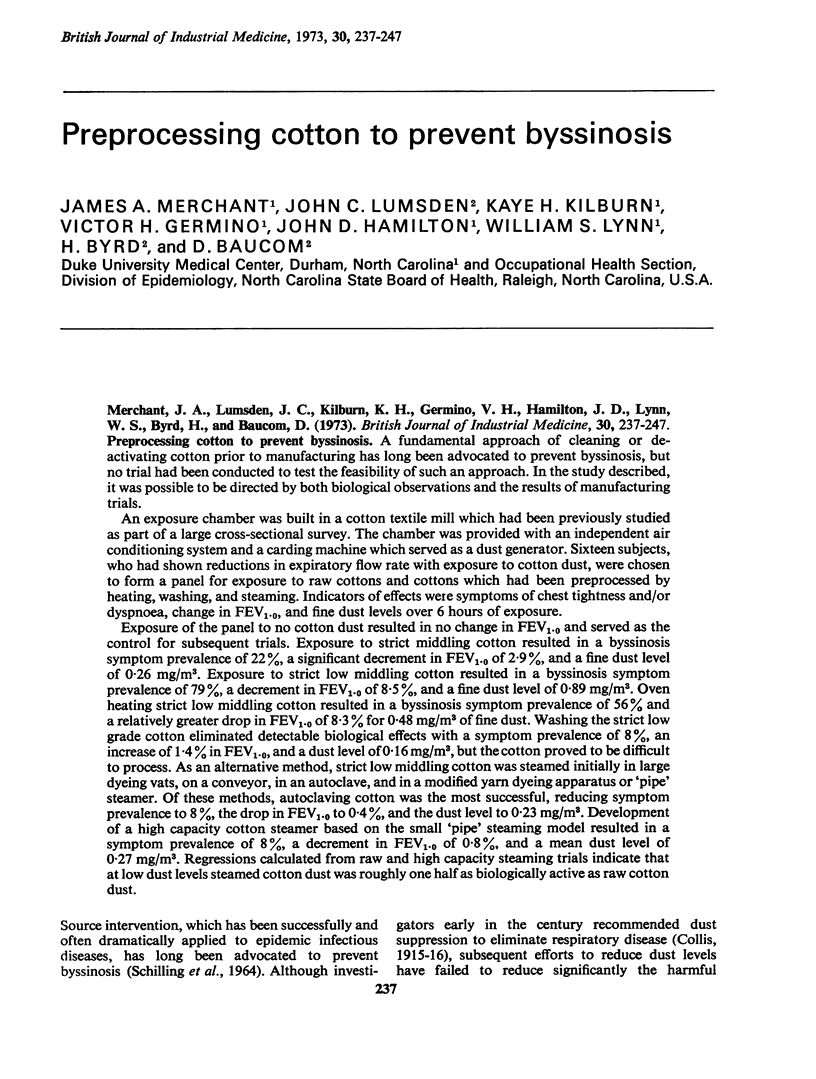
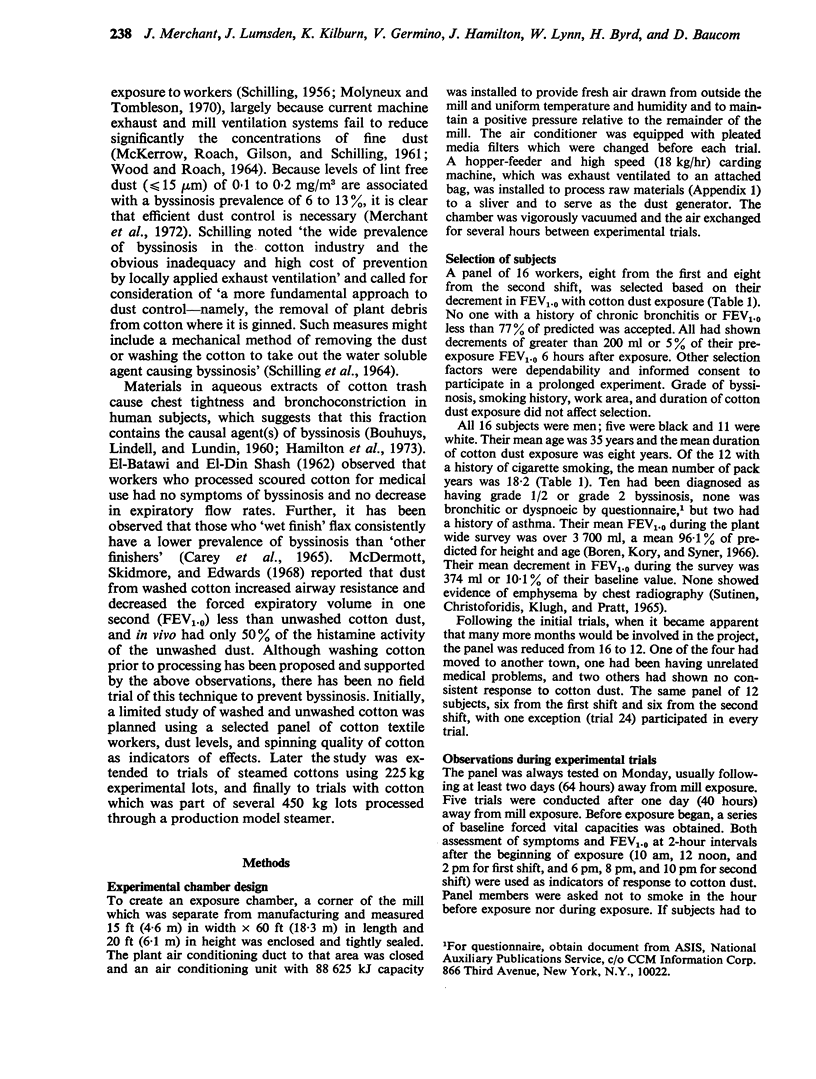
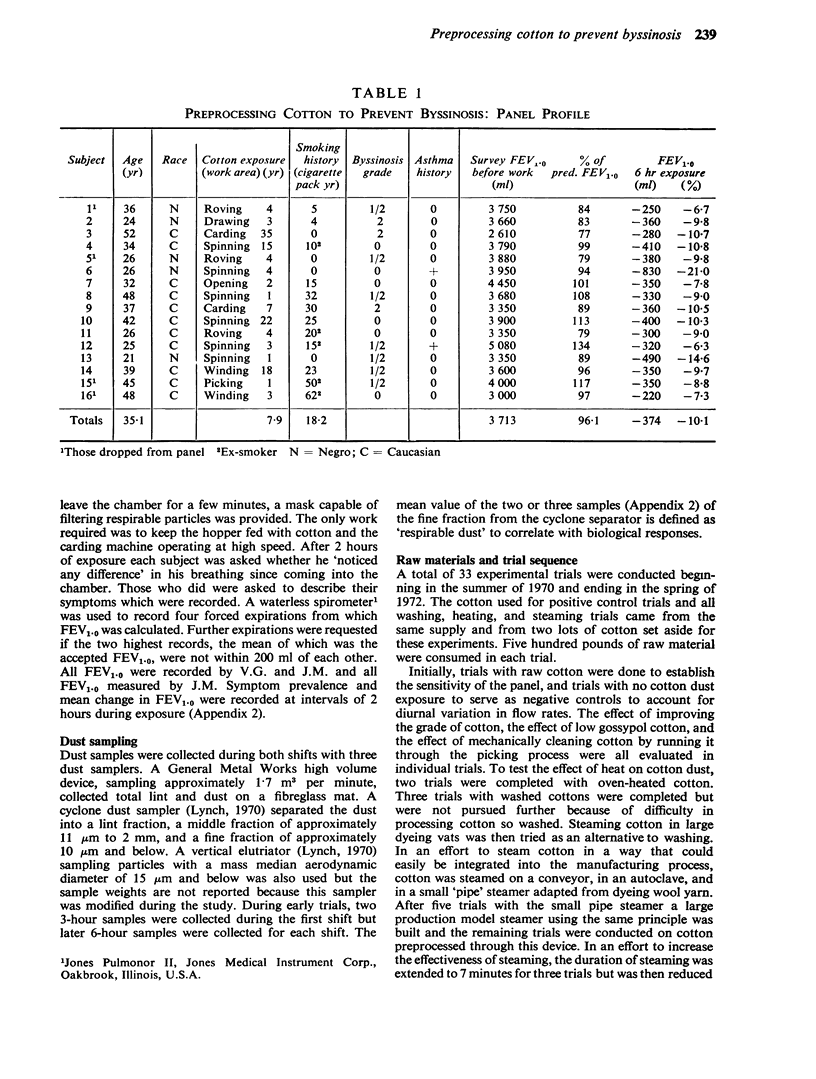
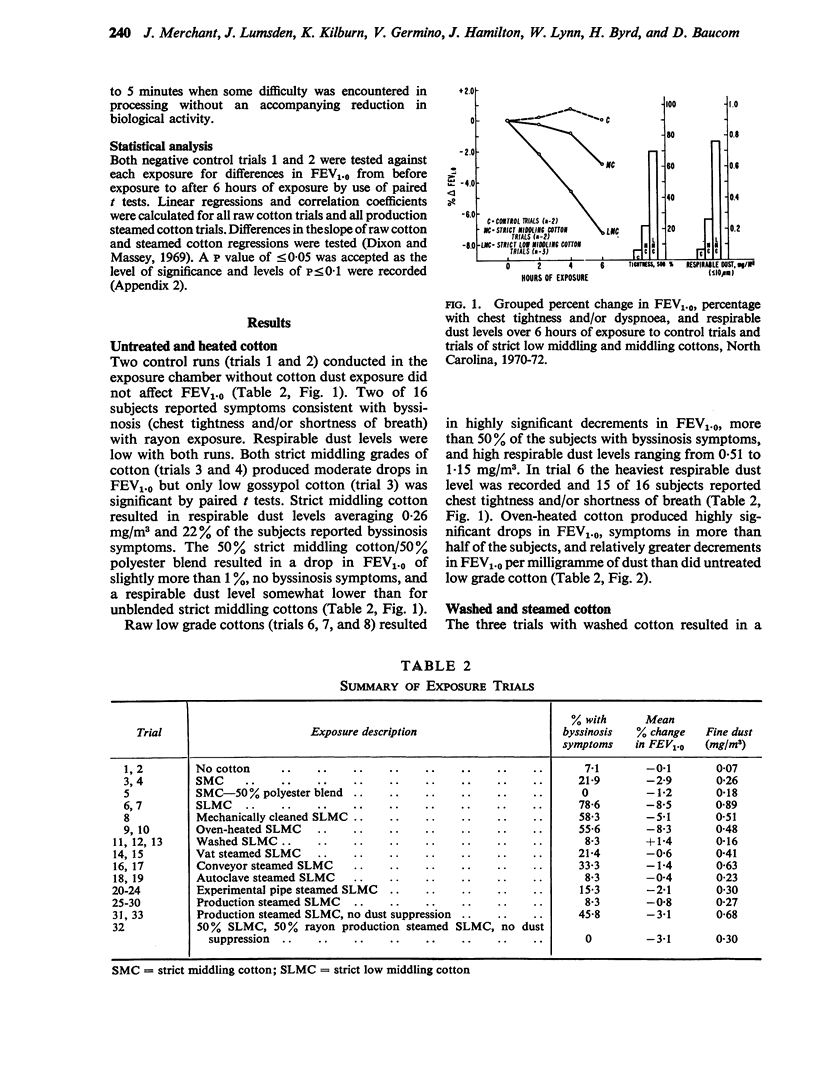
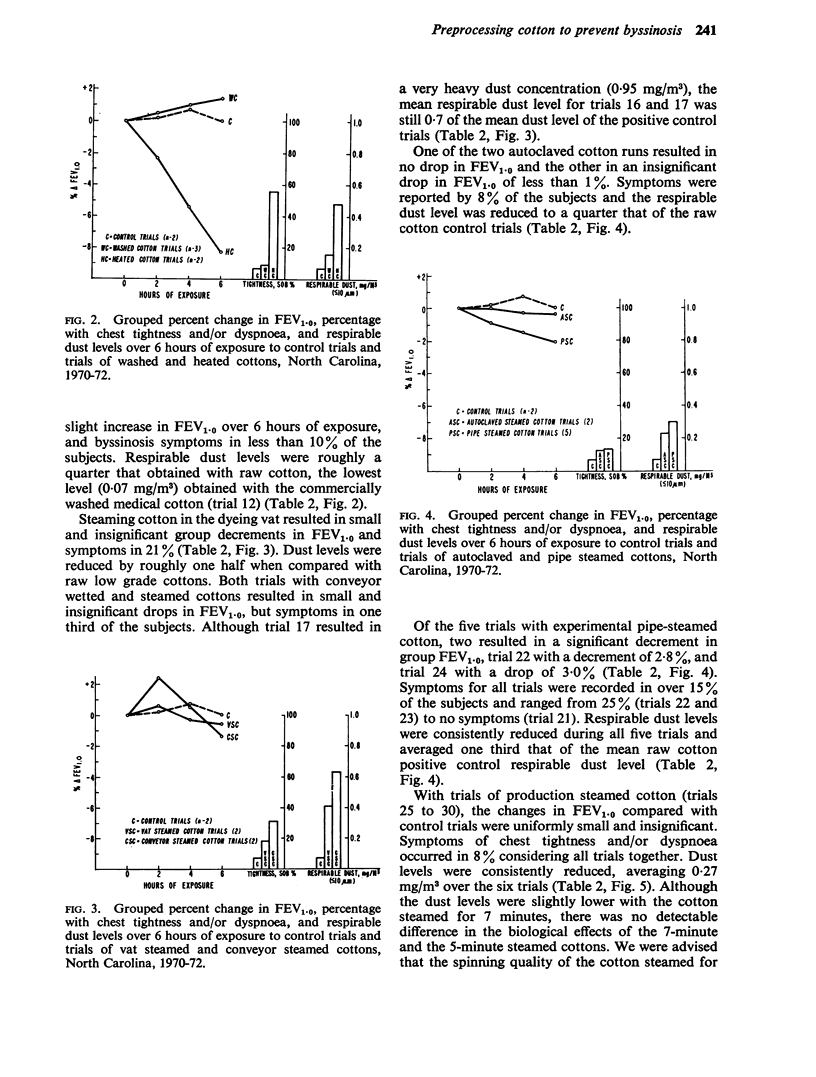
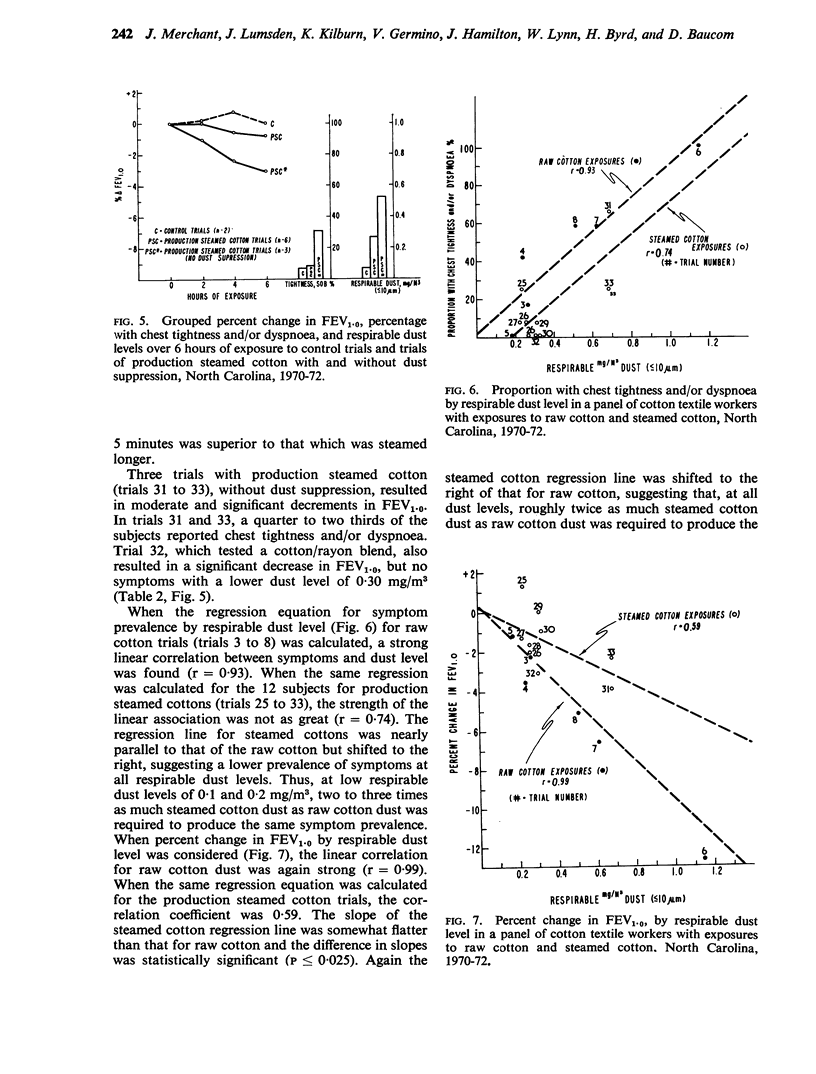
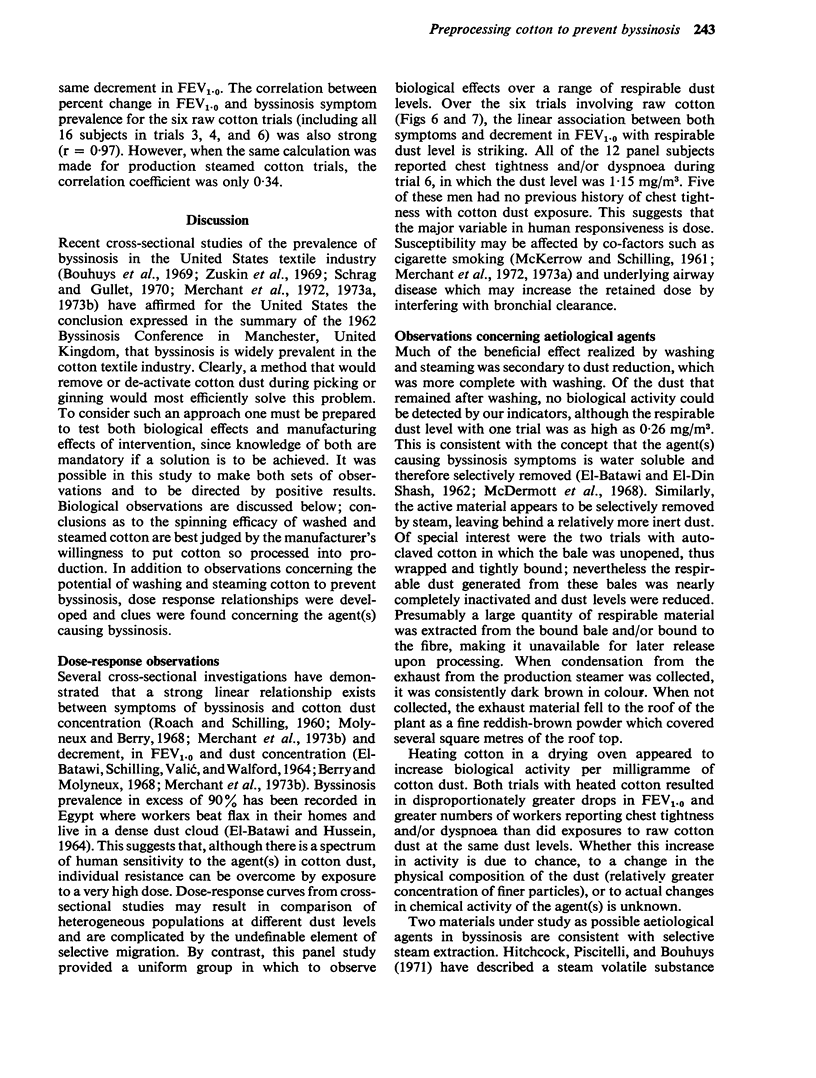
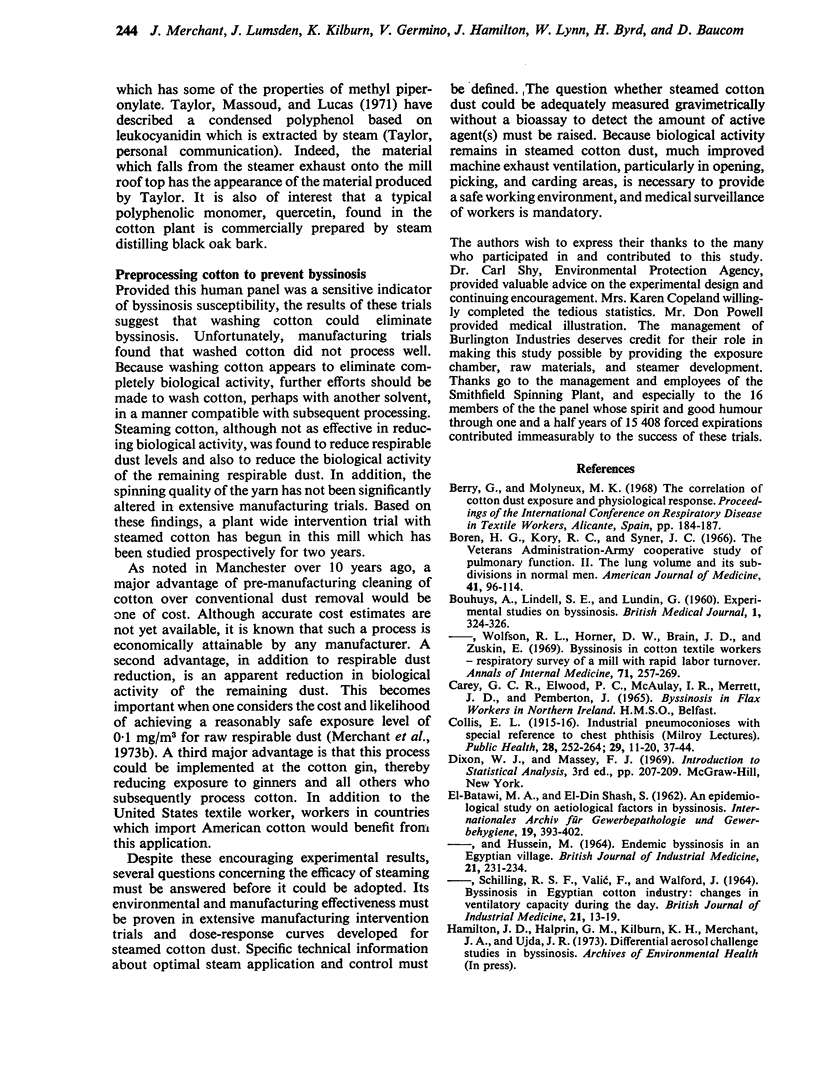
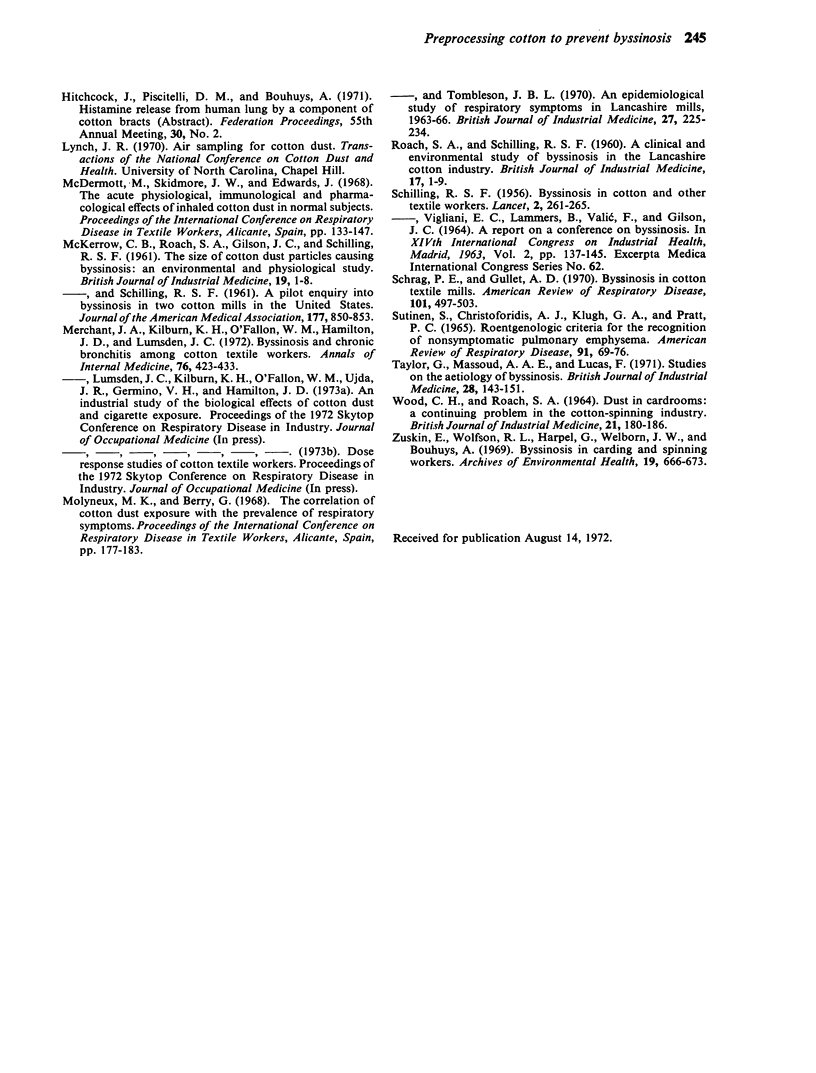
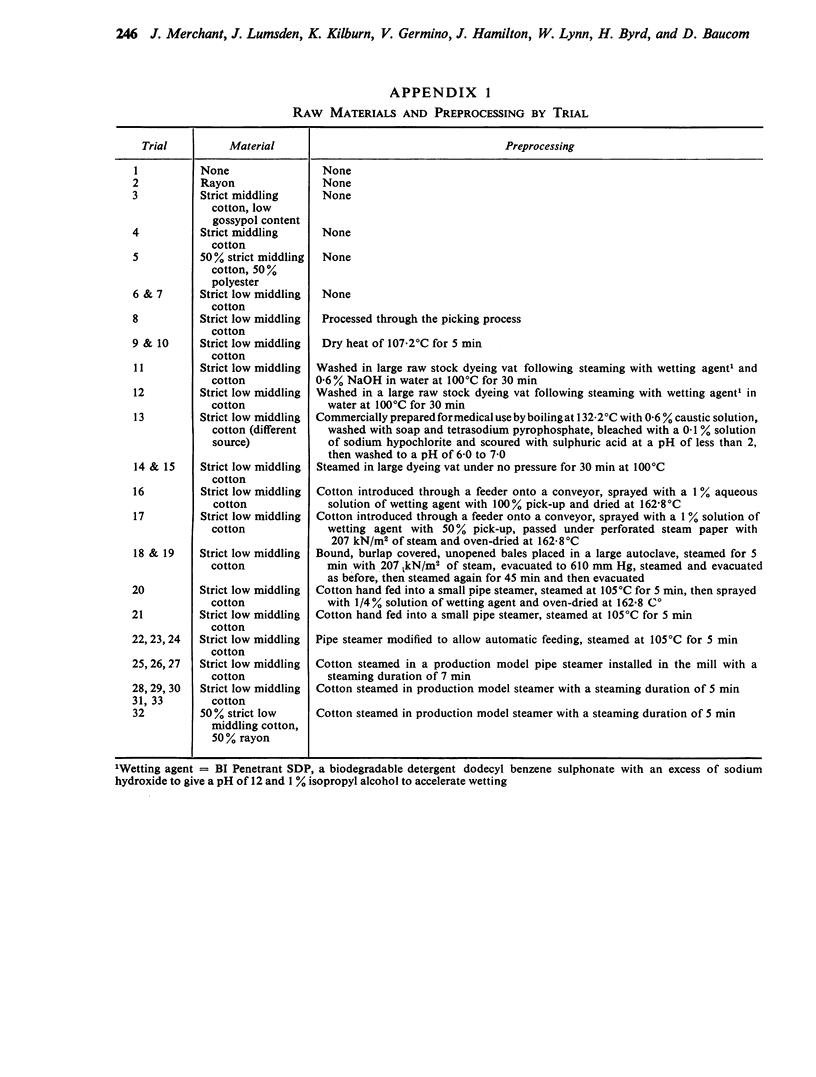
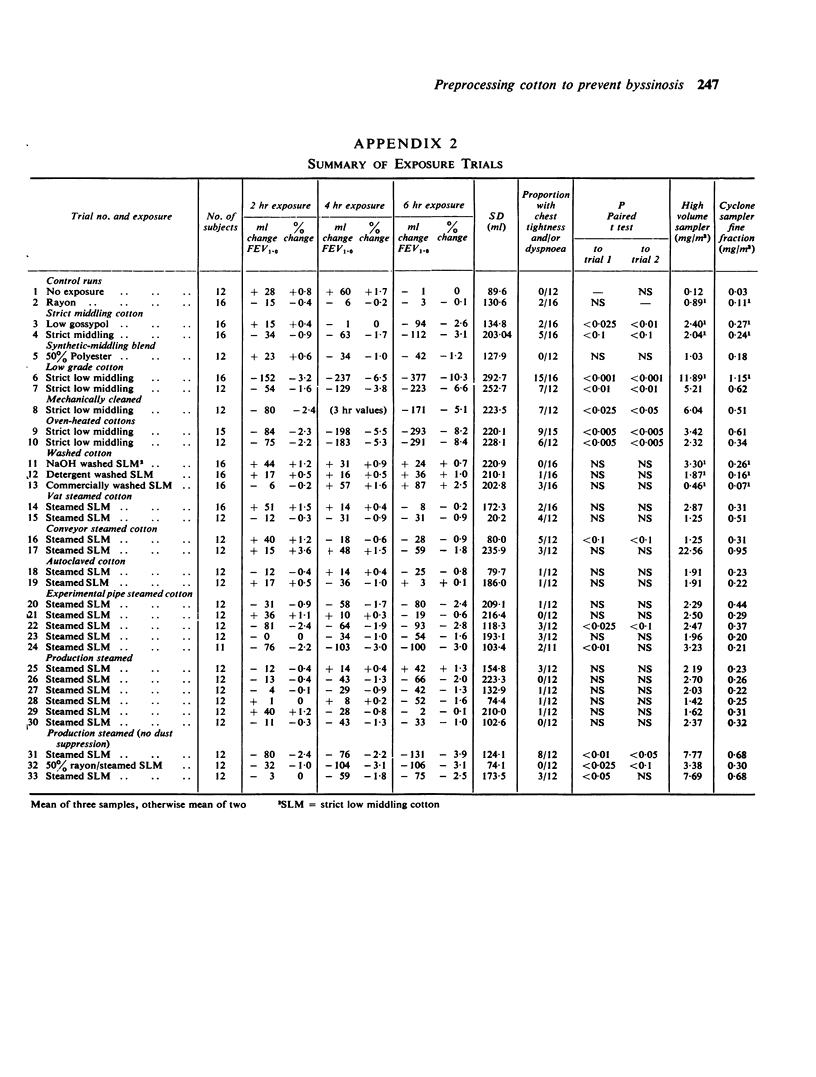
Selected References
These references are in PubMed. This may not be the complete list of references from this article.
- BOUHUYS A., LINDELL S. E., LUNDIN G. Experimental studies on byssinosis. Br Med J. 1960 Jan 30;1(5169):324–326. doi: 10.1136/bmj.1.5169.324. [DOI] [PMC free article] [PubMed] [Google Scholar]
- Bouhuys A., Wolfson R. L., Horner D. W., Brain J. D., Zuskin E. Byssinosis in cotton textile workers. Respiratory survey of a mill with rapid labor turnover. Ann Intern Med. 1969 Aug;71(2):257–269. doi: 10.7326/0003-4819-71-2-257. [DOI] [PubMed] [Google Scholar]
- EL-BATAWI M. A., EL-DIN SHASHS S. An epidermiological study on aetiological factors in byssinosis. Int Arch Gewerbepathol Gewerbehyg. 1962 Jul 5;19:393–402. doi: 10.1007/BF00312569. [DOI] [PubMed] [Google Scholar]
- ELBATAWI M. A., HUSSEIN M. ENDEMIC BYSSINOSIS IN AN EGYPTIAN VILLAGE. Br J Ind Med. 1964 Jul;21:231–234. doi: 10.1136/oem.21.3.231. [DOI] [PMC free article] [PubMed] [Google Scholar]
- ELBATAWI M. A., SCHILLING R. S., VALIC F., WALFORD J. BYSSINOSIS IN THE EGYPTIAN COTTON INDUSTRY: CHANGES IN VENTILATORY CAPACITY DURING THE DAY. Br J Ind Med. 1964 Jan;21:13–19. doi: 10.1136/oem.21.1.13. [DOI] [PMC free article] [PubMed] [Google Scholar]
- MCKERROW C. B., SCHILLING R. S. A pilot enquiry into byssinosis in two cotton mills in the United States. JAMA. 1961 Sep 23;177:850–853. doi: 10.1001/jama.1961.73040380015005. [DOI] [PubMed] [Google Scholar]
- Merchant J. A., Kilburn K. H., O'Fallon W. M., Hamilton J. D., Lumsden J. C. Byssinosis and chronic bronchitis among cotton textile workers. Ann Intern Med. 1972 Mar;76(3):423–433. doi: 10.7326/0003-4819-76-3-423. [DOI] [PubMed] [Google Scholar]
- Molyneux M. K., Tombleson J. B. An epidemiological study of respiratory symptoms in Lancashire mills, 1963-66. Br J Ind Med. 1970 Jul;27(3):225–234. doi: 10.1136/oem.27.3.225. [DOI] [PMC free article] [PubMed] [Google Scholar]
- ROACH S. A., SCHILLING R. S. A clinical and environmental study of byssinosis in the Lancashire cotton industry. Br J Ind Med. 1960 Jan;17:1–9. doi: 10.1136/oem.17.1.1. [DOI] [PMC free article] [PubMed] [Google Scholar]
- SCHILLING R. S. Byssinosis in cotton and other textile workers. Lancet. 1956 Aug 11;271(6937):261–contd. doi: 10.1016/s0140-6736(56)92077-3. [DOI] [PubMed] [Google Scholar]
- SUTINEN S., CHRISTOFORIDIS A. J., KLUGH G. A., PRATT P. C. ROENTGENOLOGIC CRITERIA FOR THE RECOGNITION OF NONSYMPTOMATIC PULMONARY EMPHYSEMA. CORRELATION BETWEEN ROENTGENOLOGIC FINDINGS AND PULMONARY PATHOLOGY. Am Rev Respir Dis. 1965 Jan;91:69–76. doi: 10.1164/arrd.1965.91.1.69. [DOI] [PubMed] [Google Scholar]
- Schrag P. E., Gullett A. D. Byssinosis in cotton textile mills. Am Rev Respir Dis. 1970 Apr;101(4):497–503. doi: 10.1164/arrd.1970.101.4.497. [DOI] [PubMed] [Google Scholar]
- Taylor G., Massoud A. A., Lucas F. Studies on the aetiology of byssinosis. Br J Ind Med. 1971 Apr;28(2):143–151. doi: 10.1136/oem.28.2.143. [DOI] [PMC free article] [PubMed] [Google Scholar]
- WOOD C. H., ROACH S. A. DUST IN CARD ROOMS: A CONTINUING PROBLEM IN THE COTTON-SPINNING INDUSTRY. Br J Ind Med. 1964 Jul;21:180–186. doi: 10.1136/oem.21.3.180. [DOI] [PMC free article] [PubMed] [Google Scholar]
- Zuskin E., Wolfson R. L., Harpel G., Welborn J. W., Bouhuys A. Byssinosis in carding and spinning workers. Prevalence in the cotton textile industry. Arch Environ Health. 1969 Nov;19(5):666–673. doi: 10.1080/00039896.1969.10666908. [DOI] [PubMed] [Google Scholar]


